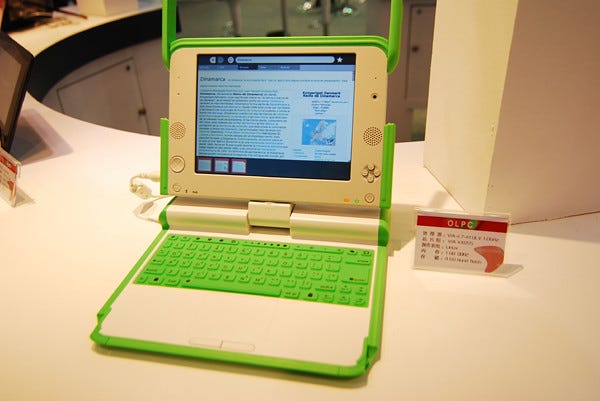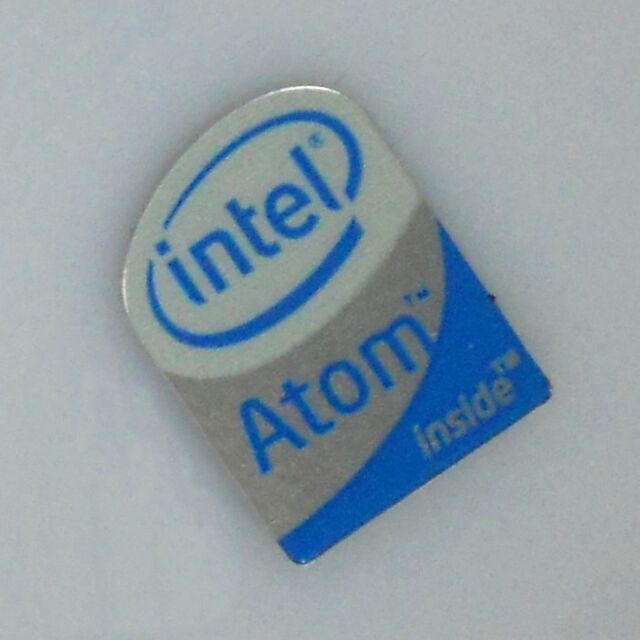Welcome to Netbook November!
As the end of 2023 approaches and everyone begins looking to what the future may hold, we here at The Retro Millennial are going to take a step back and revisit an era of computing that is often regarded as a mistake. No, not Windows Me or Apple’s failed Copeland operating system. I’m talking about the rise and fall of the netbook. It’s such an underappreciated time in relatively modern computing that I would argue had a bigger impact than many of us realize. There was such an interesting array of devices that were sold, ranging from quite cool to abysmally terrible! Still, I wanted to show the old netbook some love, thus I have dubbed this Netbook November!
Throughout this month I’ll be using a couple of netbooks I have in my collection for various projects and reporting back. I’ve already got several articles planned and in the works that are netbook related and have created a new thread in the subscriber chat for us to talk about our netbook experiences.
Feel free to join the conversation in the chat. I’ll be leaving it open all month so if you think of something later, we’ll be there for it!
What is a Netbook?
To start with, what is a netbook? When I first heard the name I thought someone had meant to say notebook — a term that was often used for laptops in the ye olden times — but then I learned of these cool little devices. The name really explains it all; a netbook is a laptop computer that is designed to be used primarily with the internet in mind. While there is some debate about what constitutes a netbook and when they came around, the general consensus is that they really became their own thing around 2007 and hit their stride around 2009 or 2010. There are some who have argued that the netbook craze of the late 2000s had its roots in the mid-90s with the Toshiba Libretto 70CT. As cool as that machine was it’s a palmtop PC, not a netbook. By all accounts, the first true netbook was probably the $100 “green machine” from the non-profit One Laptop Per Child which was unveiled in late 2005.


To clarify what a netbook is even farther, it is a notebook-styled PC with less than spectacular hardware.
All of the netbooks I’ve ever seen rock Intel Atom processors and anywhere from 256 MB to 1 GB of RAM. Some of the later ones were even 64-bit machines, but even those lacked the hardware to take advantage of the modern architecture. As a result, many netbooks launched with a slimmed down custom Linux system installed, or they shipped with the aging Windows XP.

They weren’t really workhorses, but they weren’t really meant to be. They were designed to do one thing — browse the web. Sure, you could install whatever software you wanted on them, but it probably wouldn’t work as well as it might on a more powerful machine. For example, at an old employer, I was asked to design an entire marketing booklet without any real support. No dedicated work machine, no design software, no budget to work with. So, like any advantageous young Linux enthusiast I turned to Free Software on a netbook (the D250 shown above) running Ubuntu 11.04. It had a 32-bit Intel Atom CPU with 1 GB of RAM and Ubuntu had switched to Unity at that point, so it wasn’t a great experience; but I got it done. It wasn’t great (I’m nowhere near a graphic designer), but it worked, and the campaign was surprisingly successful.
Why did Netbooks Fail?
This is the part where I’m supposed to say that netbooks didn’t really fail, but they did. They worked for a niche user base but overall, it was a consumer failure… mostly. People were drawn to them early on because computers — and specifically laptops — were so big and clunky for so long that having something small and relatively lightweight for a cheap price was really appealing! However, it wasn’t to last.
The “craze” (if you can really call it that) continued into the early 2010s until it became clear that the market for ultra-portable, web based computing was in smartphones and tablets. While I’ve not seen anyone directly attribute the death of the netbook to tablets, I would argue that the popular adoption of devices like the iPad from 2010 through 2013 — and the explosion of smartphone sales over the last decade-and-a-half or so — were one of the leading reasons we don’t see these fun little laptops in the wild anymore.

Couple that with the development of Google’s Chromebooks and web-centric ChromeOS in the mid-2010s, and you find there really wasn’t a market for the netbook anymore. Devices like tablets, Chromebooks, and even newer high-end devices like Windows Ultrabooks and the MacBook Air captured that smaller form-factor with a more dedicated kind of purpose better than netbooks really ever could.
Feature creep…
Netbooks, in my humble opinion, failed for three main reasons. First off, they lost their focus. They shifted from being dedicated, low-cost devices that people could use to browse the web, check their email, and do a handful of other things. Instead, the manufacturers tried to make them compete with full sized notebook computers and that was never what they were designed to do. While the price point remained enticing, the lackluster performance was a major turn off for a lot of people.
It’s the economy, stupid…
Second, the economy improved but the hardware didn’t. I feel like for a while there everyone blamed all economic issues on the Great Recession, but in this case, it really is at the heart of the rise and fall of the netbook. The recession began in December 2007 and continued well into Q2 of 2009, the height of the netbook’s success. As the world began climbing into economic recovery Steve Jobs announced the iPad, and in 2011 Intel worked with multiple PC makers to introduce the Ultrabook — a thin and light laptop that is both powerful and attractive but with a higher price than a netbook.
As the chart above shows, the worse the economy got, the better the netbook sold. Sure it may not be a correlation equals causation thing, but the trends are there. So when the economy improved and people were able to spend more on upgrading their aging machines, they did just that.
Ahead of their time…
Lastly, they really were devices that were ahead of their time. In 2007 laptops were still heavy and thick devices. Shrinking it down meant compromising in terms of speed, efficiency, and thermals. Flash storage was around but it was super expensive so they were limited to slow and fragile HDDs. The web was also far more limited than it is today. This meant that online services weren’t as widely available as they are now making netbooks inherently dependent on native applications. That’s not really a bad thing to someone like me, but many of those programs weren’t optimized for the low-end hardware.
If you want an example of what the netbook could and should have been, consider Google’s Chromebooks. They basically function the same, most cost around the same, the screens and keyboards aren’t much bigger on Chromebooks. The key difference was timing. The early netbooks like Asus’ Eee PC from 2007 ran a custom version of the old Xandros Linux and focused on the internet. Chromebooks, likewise, run a custom version of Gentoo Linux and focus on the internet. They both run on lower-end hardware with lower system requirements. Neither are very good at CPU or GPU intensive tasks like games and media rendering, but they are serviceable for most things.
Overall, I look back on my days running on a netbook positively. It wasn’t always a great experience but I did enjoy it. I would even say they could have a role for the modern day if you set your expectations appropriately. A netbook could make a fine little media device for playing local music, local videos, or even internet radio. They also make for decent little writing machines, though some have better keyboards than others. If you have an old netbook lying around, dig it out and dust it off. See what you can do with it for the rest of the month, and tell us all about it!
Thanksgiving 2023 subscription sale is underway! Sign up or upgrade your subscription to save 25% and get access to articles, the New-Old Stock podcast, and more as a paid-monthly, annual, or founding member.
Monthly:
$5.00$3.75Annual:
$50.00$37.50Founding:
$150.00$112.50








